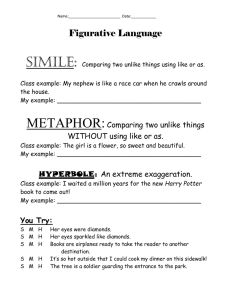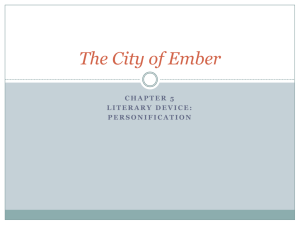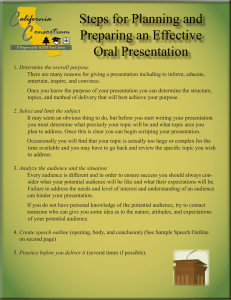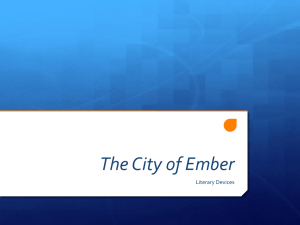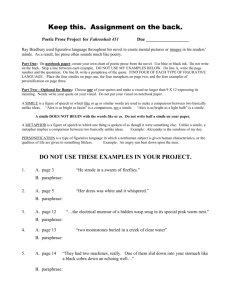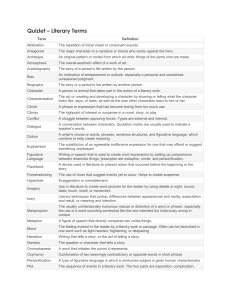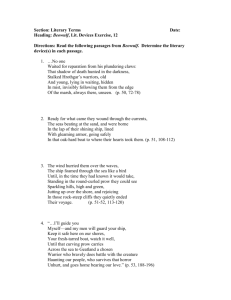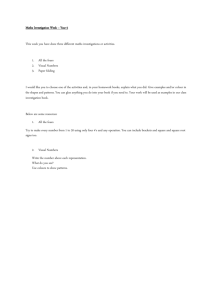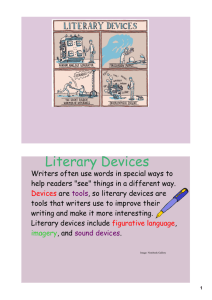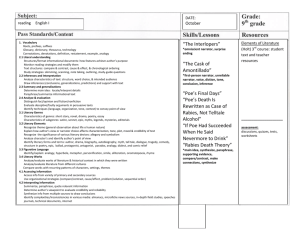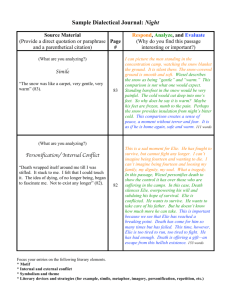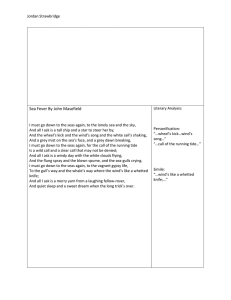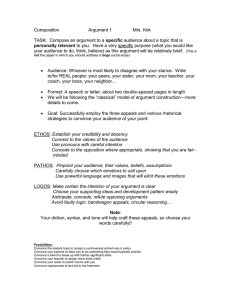WASL Reading Terminology reading_terminology
advertisement
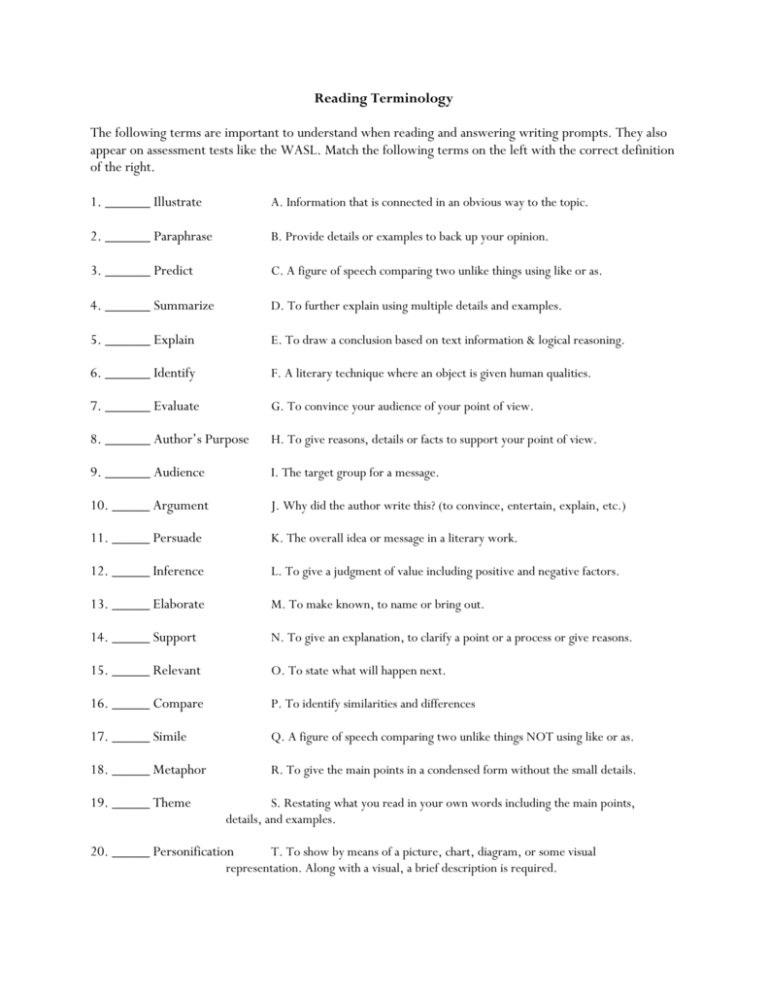
Reading Terminology The following terms are important to understand when reading and answering writing prompts. They also appear on assessment tests like the WASL. Match the following terms on the left with the correct definition of the right. 1. ______ Illustrate A. Information that is connected in an obvious way to the topic. 2. ______ Paraphrase B. Provide details or examples to back up your opinion. 3. ______ Predict C. A figure of speech comparing two unlike things using like or as. 4. ______ Summarize D. To further explain using multiple details and examples. 5. ______ Explain E. To draw a conclusion based on text information & logical reasoning. 6. ______ Identify F. A literary technique where an object is given human qualities. 7. ______ Evaluate G. To convince your audience of your point of view. 8. ______ Author’s Purpose H. To give reasons, details or facts to support your point of view. 9. ______ Audience I. The target group for a message. 10. _____ Argument J. Why did the author write this? (to convince, entertain, explain, etc.) 11. _____ Persuade K. The overall idea or message in a literary work. 12. _____ Inference L. To give a judgment of value including positive and negative factors. 13. _____ Elaborate M. To make known, to name or bring out. 14. _____ Support N. To give an explanation, to clarify a point or a process or give reasons. 15. _____ Relevant O. To state what will happen next. 16. _____ Compare P. To identify similarities and differences 17. _____ Simile Q. A figure of speech comparing two unlike things NOT using like or as. 18. _____ Metaphor R. To give the main points in a condensed form without the small details. 19. _____ Theme S. Restating what you read in your own words including the main points, details, and examples. 20. _____ Personification T. To show by means of a picture, chart, diagram, or some visual representation. Along with a visual, a brief description is required.

